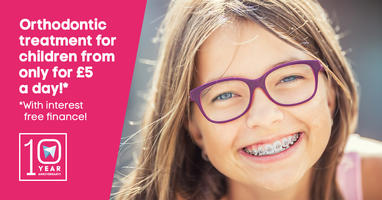One of the many gadgets available for use to correct facial muscles and the positioning of the teeth is the orthodontic trainer. This is often used as a pre-orthodontic instrument, meaning that it goes in before orthodontic braces are used, with the aim of making the orthodontic treatment more effective, shorter, and less painful than it would otherwise probably be. Here are a few words about this often misunderstood device.
What is it?
Orthodontic trainers are small plastic tooth guards with a textured inside. The inside is supposed to accommodate the existing teeth and, more importantly, erupting teeth, and glide them into a healthy position.
What does it do?
The trainers are meant to take the teeth as they grow in and train them to grow into a better position. The teeth are not only guided, but by being gently pushed or pulled at an early age, they can be “taught” to grow in well, and be well aligned.

When is it used?
Typically the trainers are used at an early age, when the milk teeth are already starting to be shed, but there is still a heterogenous mixture of milk teeth and adult teeth in the mouth. As these are frequently a pre-orthodontic strategy, the trainers are used before orthodontics would have any benefit, meaning before the second molars have erupted. This is when the jawbone is still very malleable and the teeth can easily be redirected.
There are adult trainers as well, though. They differ from regular trainers in that they are larger and are meant to train bigger and more firmly rooted teeth, so they must be able to exert more force.
Trainers can also change myofascial characteristics as well. They can correct problems or misalignments that are caused by the positioning of the muscles in the face, and these can also be trained to be in a less harmful position. This usually couples with the patient becoming more attractive, as evenly defined faces are usually found to be prettier. However, the function of the orthodontic trainer is not aesthetic, the device exists to correct the positioning of the teeth.
Orthodontic trainers can also correct problems that are caused from mechanical issues like thumb sucking or pacifiers.
image: 1.

